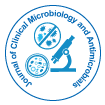

Charambira Kelvin
Background: Zimbabwe conducted a second anti-tuberculosis drug resistance survey (TB-DRS) in 2015/16 using the Xpert MTB/RIF assay. This assay uses molecular beacons in five overlapping regions of the rpoB DNA region. The probes detect mutations in the codons 507 to 511 (Probe A), 511 to 518 (Probe B), 518 to 523 (Probe C), 523 to 529 (Probe D), and 529 to 533 (Probe E). We report the frequencies of mutations in rpoB gene of the Mycobacterium tuberculosis (MTB) among the TB-DRS samples with rifampicin resistance tuberculosis (RR-TB) detected. Method: A retrospective review of data collected through the TB-DRS and using the GxAlert platform to check the actual probe details for those tests from samples that had RR-TB strains. Sputum smear positive samples had an Xpert MTB/RIF assay done followed by phenotypic culture and drug susceptibility testing (DST) in those that had RR-TB detected. Results: A total of 60 specimens had RR-TB detected on Xpert MTB/RIF assay. Of these, 50 (83.3%) had Mycobacterium tuberculosis growth on culture with 48 (96.0%) confirmed RR-TB on phenotypic DST. Among those confirmed RR-TB on phenotypic DST, 23 (47.9%) had rifampicin mono-resistance (RMR) detected and 25 had additional isoniazid resistance (MDR-TB). Probe E mutations occurred in 46% (23/50), probe D 34% (17/50), probe B 10% (5/50), probe A 2% (1/50) and probe C 2% (1/50) of the specimens. Among the RMR, probe D mutation occurred in 54.5% (12/22), probe E 36.4% (8/22), probe A 4.5% (1/22) and probe B 4.5% (1/22). Conclusion: There is increase in the RMR prevalence from zero percent to 48% between the 1994/5 and 2015/6 TB-DRS. Rifampicin (RMP) seems to be associated with mutations in codons 523 to 529 of the rpoB gene of MTB DNA. GxAlert makes it possible to conduct such surveillance remotely and there is need for further studies to cement this.